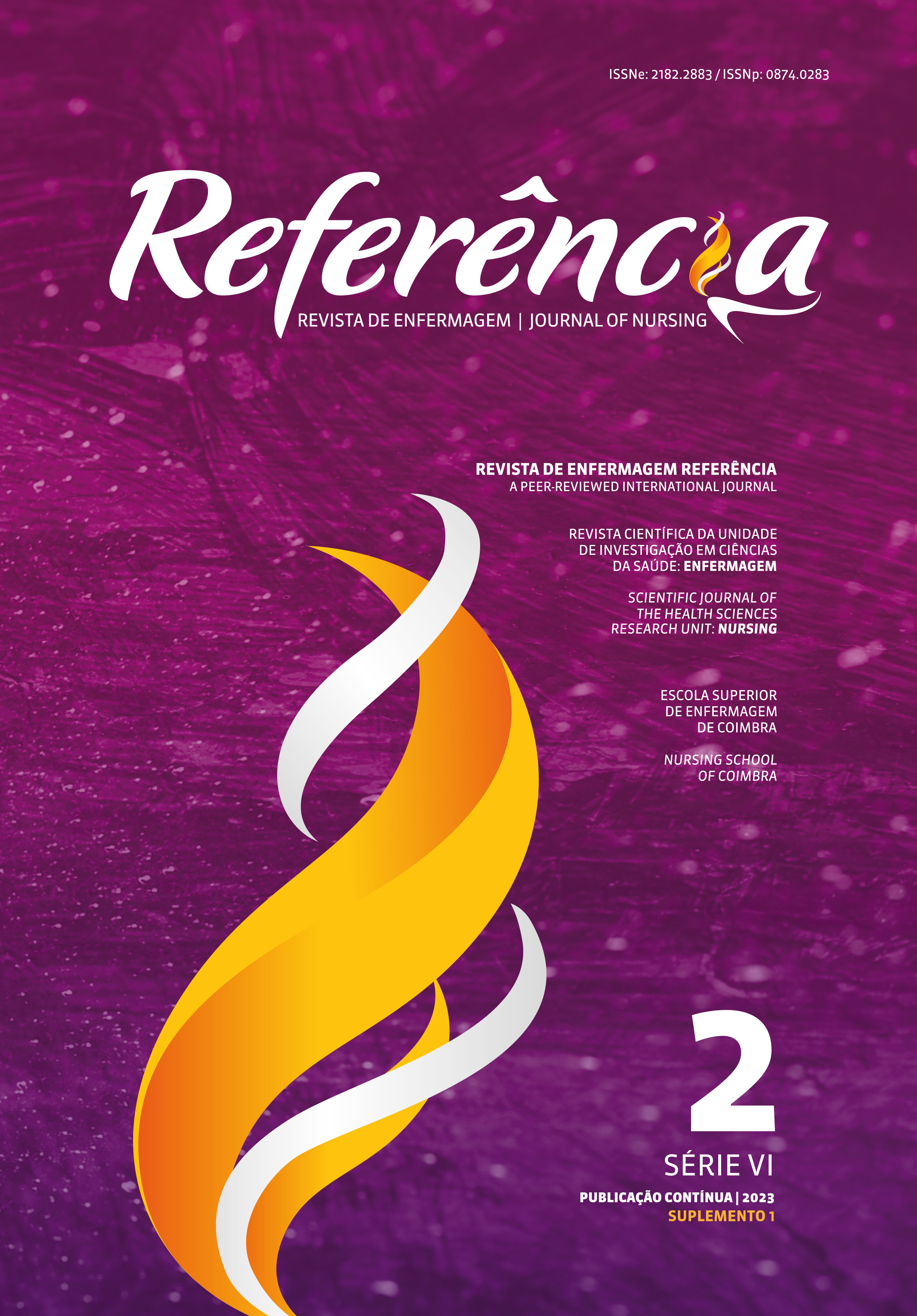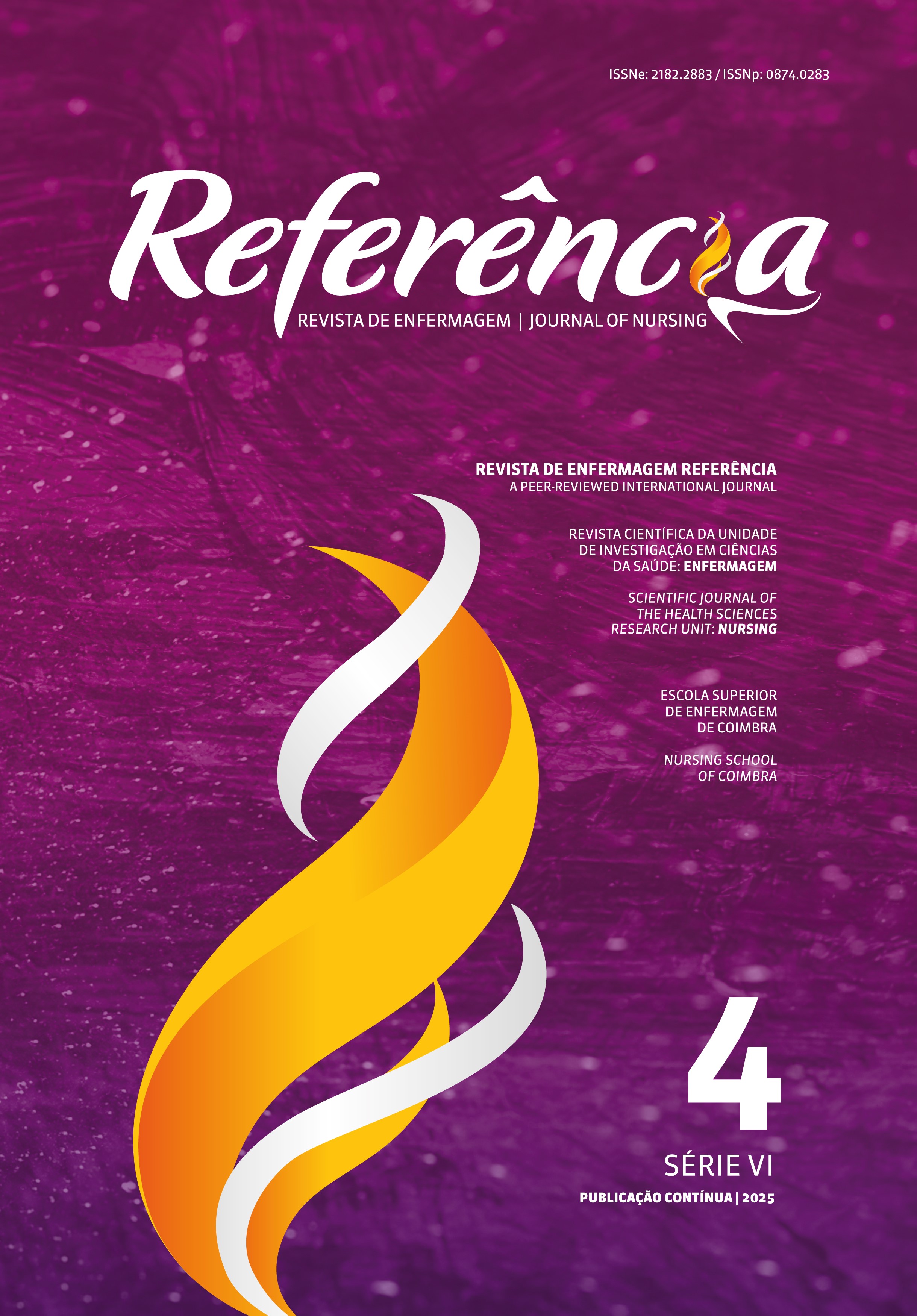Relación del tipo de contacto físico con la lactancia materna exclusiva en el momento del alta hospitalaria
DOI:
https://doi.org/10.12707/RVI22030Palabras clave:
recien nacido prematuro, lactancia materna, enfermería neonatal, prevalencia, método madre-canguroResumen
Marco contextual: Promover el contacto físico, especialmente piel con piel, de forma inmediata o precoz en recién nacidos prematuros sigue siendo un desafío.
Objetivo: Comprobar la prevalencia del contacto físico entre la madre y el recién nacido prematuro en el momento del nacimiento y asociar el tipo de contacto físico realizado por el binomio en la sala de partos con la prevalencia de la lactancia materna exclusiva en el momento del alta hospitalaria.
Metodología: Estudio transversal con una muestra no probabilística de 78 madres y 79 recién nacidos prematuros. La recogida de datos se realizó de julio a noviembre de 2017, mediante entrevista y consulta en antecedentes clínicos, y los datos se analizaron según la estadística descriptiva y la regresiónde Poisson con varianza robusta.
Resultados: La prevalencia de cualquier tipo de contacto físico realizado en la sala de partos fue del 51,9%, sin diferencias estadísticas entre el tipo de contacto físico realizado entre la madre y el bebé, y la lactancia materna exclusiva en el momento del alta.
Conclusión: El contacto físico mediante caricias y besos durante el parto no influyó en la prevalência de la lactancia materna exclusiva en el momento del alta hospitalaria.
Descargas
Citas
Araújo, K. E., Santos, C. C., Caminha, M. F., Silva, S. L., Pereira, J. C., & Batista Filho, M. (2021). Skin to skin contact and the early initiation of breastfeeding: A cross-sectional study. Texto & Contexto Enfermagem, 30, e20200621. https://doi.org/10.1590/1980-265X-TCE-2020-0621
Bowlby, J. (1984). Apego: A natureza do vínculo. Martins Fontes. Charpak, N., Tessier, R., Ruiz, J. G., Hernandez, J. T., Uriza, F., Villegas, J., Nadeau, L., Mercier, C., Maheu, F., Marin, J., Cortes, D., Gallego, J. M., & Maldonado, D. (2017). Twenty-year follow-up of kangaroo mother care versus traditional care. Pediatrics,139(1), e20162063. https://doi.org/10.1542/peds.2016-2063
Conde-Agudelo, A., Belizán, J. M., & Diaz-Rossello, J. (2016). Kangaroo mother care to reduce morbidity and mortality in low birthweight infants. The Cochrane Database of Systematic Reviews, 3, CD002771. https://doi.org/10.1002/14651858.CD002771.pub4
Gianni, M. L., Bezze, E. N., Sannino, P., Baro, M., Roggero, P., Muscolo, S., Plevani, L., & Mosca, F. (2018). Maternal views on facilitators of and barriers to breastfeeding preterm infants. BMC Pediatrics, 18(1), 283. https://doi.org/10.1186/s12887-018-1260-2
Karimi, F. Z., Miri, H. H., Khadivzadeh, T., & Maleki-Saghooni, N. (2020). The effect of mother-infant skin-to-skin contact imme after birth on exclusive breastfeeding: A systematic review and meta-analysis. Journal of the Turkish German Gynecological Association, 21(1), 46–56. https://doi.org/10.4274/jtgga.galenos.2019.2018.0138
Maastrup, R., Haiek, L. N., & Neo-BFHI Survey Group. (2019). Compliance with the baby-friendly hospital initiative for neonatal wards in 36 countries. Maternal Child Nutrition, 15(2), e12690. https://doi.org/10.1111/mcn.12690
Mekonnen, A., Yehualashet, S., & Bayleygn, D. (2019). The effect of kangaroo mother care on the time to breastfeeding initiation among preterm and LBW infants: A meta-analysis of published studies. International Breastfeed Journal,14, 12. https://doi.org/10.1186/s13006-019-0206-0
Ministério da Saúde. (2017). Atenção humanizada ao recém-nascido: Método canguru: Manual técnico (3ª ed.). https://bvsms.saude.gov.br/bvs/publicacoes/atencao_humanizada_metodo_canguru_manual_3ed.pdf
Monteiro, A. T., Rossetto, E. G., Pereira, K. O., Lakoski, M. C., Birolim, M. M., & Scochi, C. G. (2017). Exclusive breastfeeding in preterm infants at child-friendly hospitals: A comparative study. Online Brazilian Journal of Nursing, 16(3), 319-330. http://www.objnursing.uff.br/index.php/nursing/article/view/5627/html
Moore, E. R., Bergman, N., Anderson, G. C., & Medley, N. (2016). Early skin-to-skin contact for mothers and their healthy newborn infants. Cochrane Database of Systematic Reviews, 11, CD003519. https://doi.org/10.1002/14651858.CD003519.pub4
Navas, A. R., Peteiro, M. L., Blanco, L. S., López, C. N., Seoane, P. T., & Pertega, D. S. (2021). Women’s satisfaction with childbirth and postpartum care and associated variables. Revista da Escola de Enfermagem da USP, 55, e03720. https://doi.org/10.1590/S1980-220X2020006603720
Nyqvist, K. H., Maastrup, R., Hansen, M. N., Haggkvist, A. P., Hannula, L., Ezeonodo, A., & Laura, N. (2015). Neo-BFHI: The baby-friendly hospital initiative for neonatal wards (5ª ed.). https://epilegothilasmo.gr/wp-content/uploads/2017/04/Neo_BFHI_Core_document_2015_Edition.pdf
Saco, M. C., Coca, K. P., Abrão, A. C., Marcacine, K. O., & Abuchaim, E. S. (2019). Contacto pele a pele e mamada precoce: Fatores associados e influência no aleitamento materno exclusivo. Texto Contexto Enfermagem, 28, e20180260. http://dx.doi.org/10.1590/1980-265X-TCE-2018-0260
Veronez, M., Borghesan, N., Corrêa, D., & Higarashi, I. H. (2017). Vivência de mães de bebés prematuros do nascimento a alta: Notas de diários de campo. Revista Gaucha de Enfermagem, 38(2), e60911. https://doi.org/10.1590/1983-1447.2017.02.60911
WHO Immediate KMC Study Group, Arya, S., Naburi, H., Kawaza, K., Newton, S., Anyabolu, C. H., Bergman, N., Rao, S., Mittal, P., Assenga, E., Gadama, L., Larsen-Reindorf, R., Kuti, O., Linnér, A., Yoshida, S., Chopra, N., Ngarina, M., Msusa, A. T., Boakye-Yiadom, A., … Massawe, A. (2021). Immediate “kangaroo mother care” and survival of infants with low birth weight. The New England Journal of Medicine, 384(21), 2028–2038. https://doi.org/10.1056/NEJMoa2026486
Winnicott, D. (1988). Textos selecionados da pediatria à psicanálise. Francisco Alves. World Health Organization. (2022a). WHO recommendations for care of the preterm or low birth weight infant. https://doi.org.9789240058262-eng.pdf
World Health Organization. (2022b). Preterm birth https://www.who.int/news-room/fact-sheets/detail/preterm-birth






















